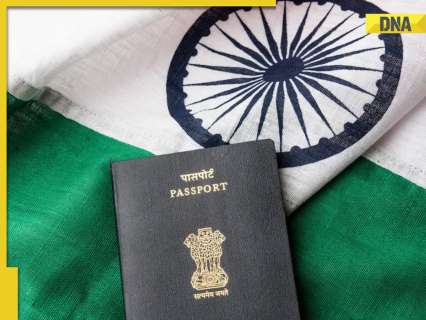Now Reading: India Rolls Out E-Passports in 13 Cities: What Happens to Paper Passports?
-
01
India Rolls Out E-Passports in 13 Cities: What Happens to Paper Passports?
India Rolls Out E-Passports in 13 Cities: What Happens to Paper Passports?

Swift Summary
- Launch of e-passports: India rolled out teh first phase of its next-generation e-passport initiative in 13 cities on Tuesday, integrating advanced electronic technology with conventional paper passports.
- Pilot program origins: The e-passport project was initiated under a pilot phase in April last year, as part of the Passport Seva Program (PSP) Version 2.0.
- Cities covered: E-passports are currently being issued in Nagpur, Bhubaneswar, Jammu, Goa, Shimla, Raipur, Amritsar, Jaipur, Chennai (Tamil Nadu), Hyderabad, Surat, Ranchi and Delhi. Tamil Nadu began issuing them on March 3 and had already issued 20,729 e-passports by March 22.
- Features:
– A gold-coloured symbol printed below the front cover for identification.
– Embedded RFID chip and antenna within the passport’s inlay.
– Integration of Public key Infrastructure (PKI) for secure storage and verification of biometric/personal data.
– enhanced security to prevent forgery or tampering through advanced data protection capabilities.
- Paper passports remain valid: Transitioning to e-passports is optional; existing paper passports will remain valid until their expiration dates.
Indian Opinion Analysis
The introduction of e-passports signifies India’s commitment to adopting cutting-edge technologies for improving citizen services while addressing global concerns like identity theft and document fraud during international travel.By including RFID technology and PKI systems for data verification and security measures that minimize forgery risks-these passports are expected to streamline border control processes.
The phased rollout across cities reflects calculated implementation aimed at scaling infrastructure gradually before nationwide adoption by mid-2025. However, retaining validity for existing paper-based passports ensures inclusivity in giving citizens adequate time to transition voluntarily without imposing urgency or accessibility barriers.this technological leap not only positions India favorably within international standards but also speaks to broader aspirations-modernizing public services while infusing resilience into essential documentation systems amid growing cyber threats globally.



























